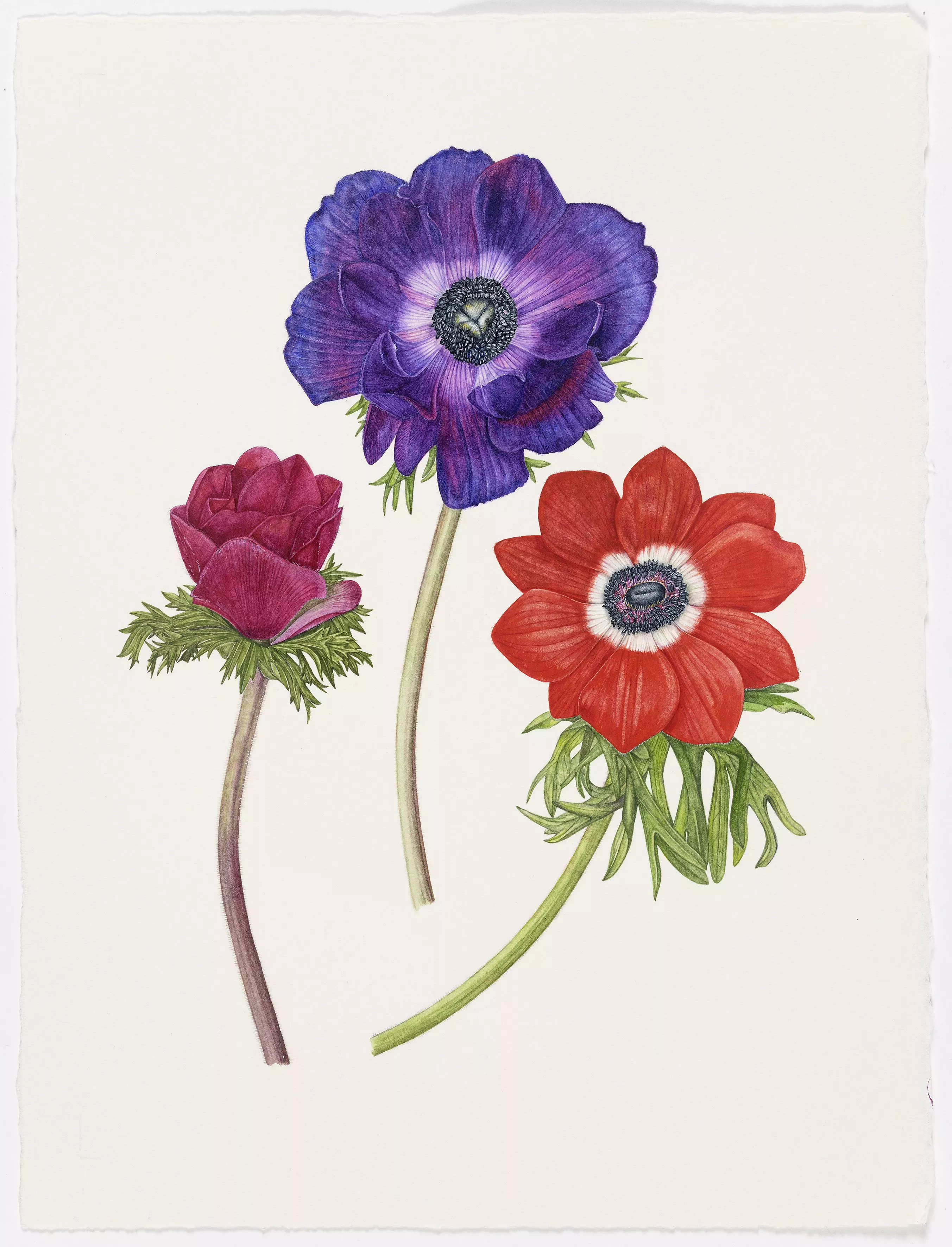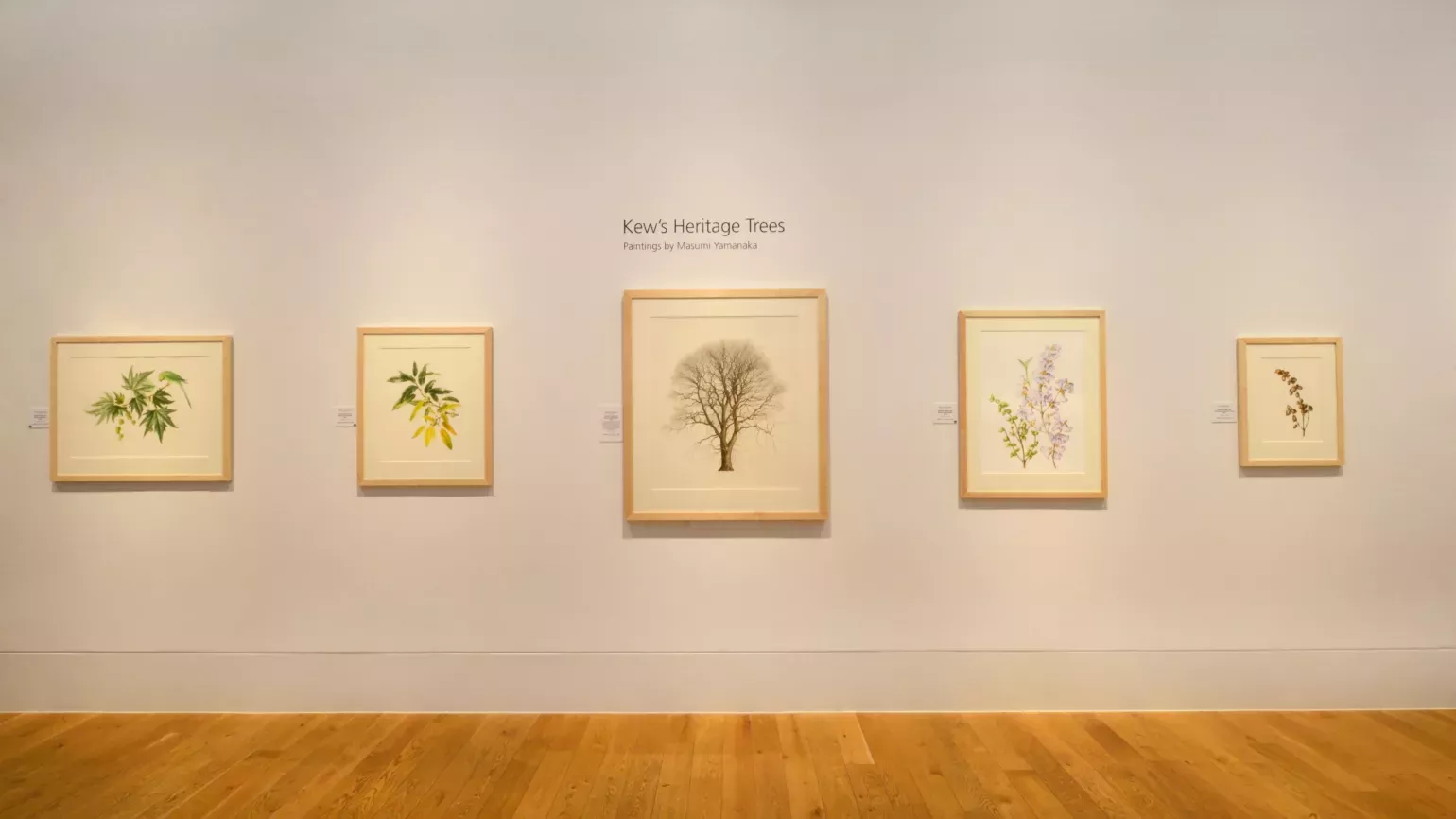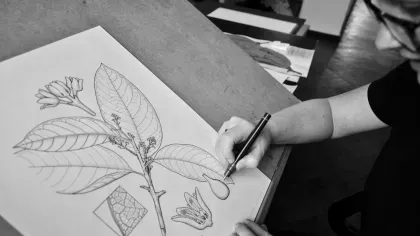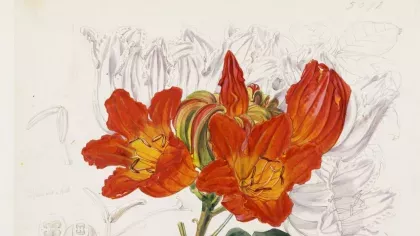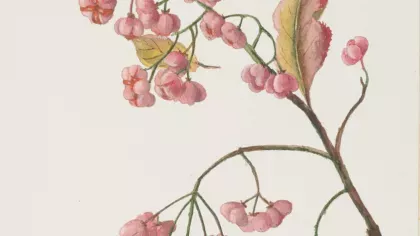30 August 2019
Best plants to paint for beginners
Our expert botanical artists reveal the easiest plants to illustrate if you've just picked up a pen or brush.

Botanical illustration is the unique point where art meets science.
Not only do these paintings and drawings express the beauty of the plant world, they can also be used by botanists to identify and document plants.
This is thanks to the art's remarkable lifelike detail, technical accuracy and revelation of hidden features that a photograph wouldn't be able to convey.
So it may seem like a challenging task if you're just starting out as a beginner in botanical art.
Whether you're using an ink pen, paint brush or coloured pencil, our talented botanical artists are here to give you a helping hand by picking the easiest plants to illustrate...
Stargazer lily (Lilium 'Stargazer')
Hazel Wilks
'So you want to start exploring botanical art and you’re looking for a good subject to start practising with?
'I would recommend going down to your local supermarket or florist and getting a bunch of stargazer lilies. Here's why:
- If you look at them closely they have both vibrant and delicate colours
- They have large showy flowers. Because of their size you can draw them at a 1:1 scale which will make things far easier. When creating your composition I suggest using a pair of dividers to measure the petals and structures and placing measurement markers on your paper to guide you
- The petals have lovely organic, curving lines
- The floral structures, such as anthers and stigmas, are large and can be viewed easily by the naked eye. There's no need for a microscope or hand lens
- Some varieties have dark spots on the petals which add interest and are ideal for improving your observational drawing technique
- The lance-shaped leaves have distinct margins and a rather flat structure making them easy to draw. They may challenge you with depiction of parallel lines, but the venation (the arrangement of veins in the leaf) is simple compared to many other plants
'Stargazers are bold and beautiful flowers. Whether you are drawing them in ink, or coloured pencil, or painting them in watercolour, they make for an ideal subject for beginners.'
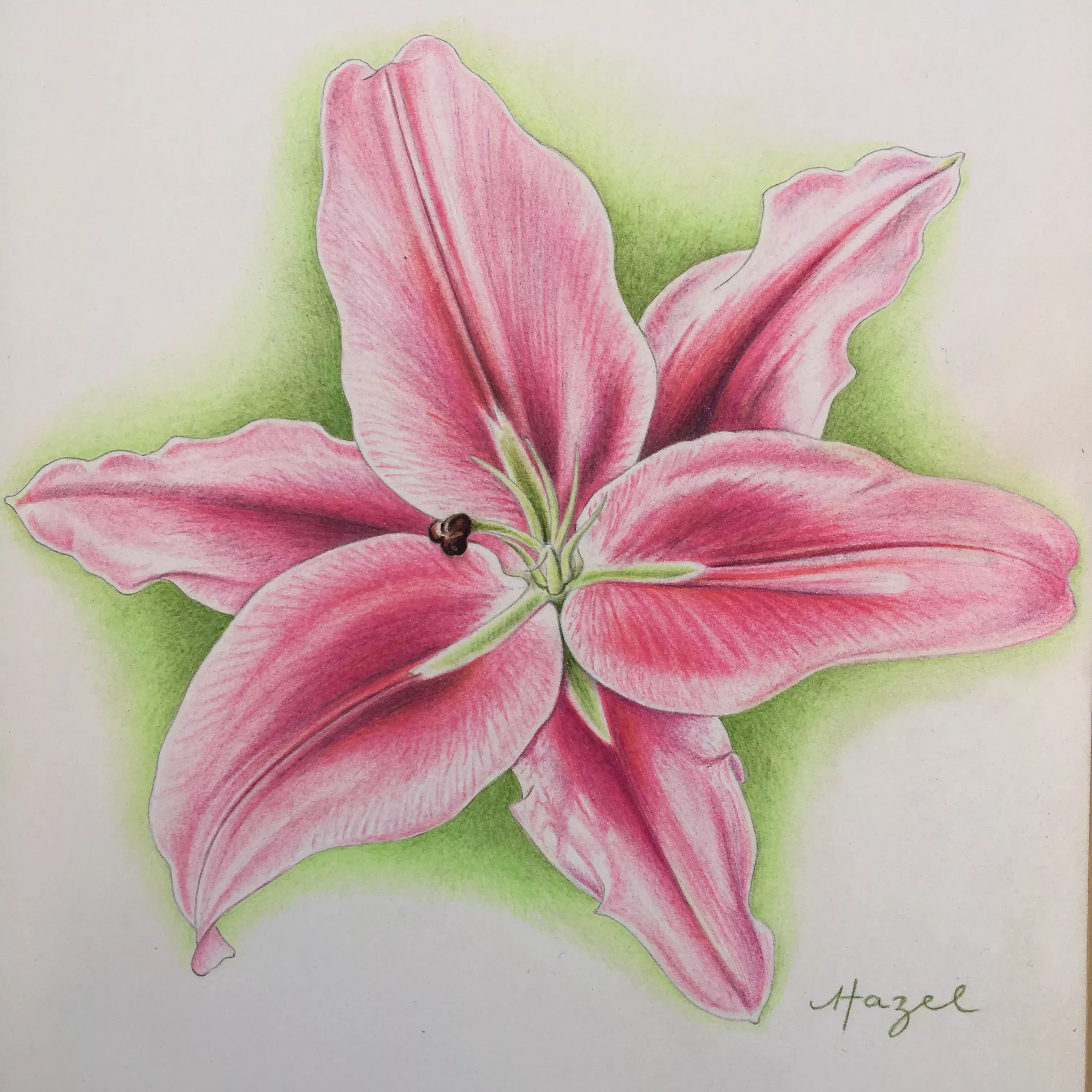
Primrose (Primula vulgaris) and late cotoneaster (Cotoneaster lacteus)
Lucy Smith
'Rather than recommend a specific plant for botanical artists who are starting out, my first piece of advice is: find a plant that you can fall a little bit in love with.
'That said, the process of studying, drawing and painting any plant will draw you into its unique form and can lead to deep satisfaction.
'Choose a plant which is readily available for the season.
'Look for simple leaves, and attachments and structures which are clear to see.
'In our spring Kew Botanical Illustration classes we often use common cowslip (Primula veris) or primrose (Primula vulgaris). Flowers such as these are radially symmetrical and therefore good for drawing.
'Spring bulbs offer not only simple flower structures, but also the lovely three-dimensional shape of the underground bulb.
'In autumn, we like to draw branchlets of late cotoneaster (Cotoneaster lacteus) as its leaves and venation are a classic shape, and its red berries are fun to draw and paint.
'Choose a plant which is plentiful in supply and has flowers at all different stages of development so that you have plenty of material to study.
'Finally, dried woody fruits such as pods and capsules are good for practising the rendering of form and tone as, unlike living plants, they will not change before your eyes as you work on them.'
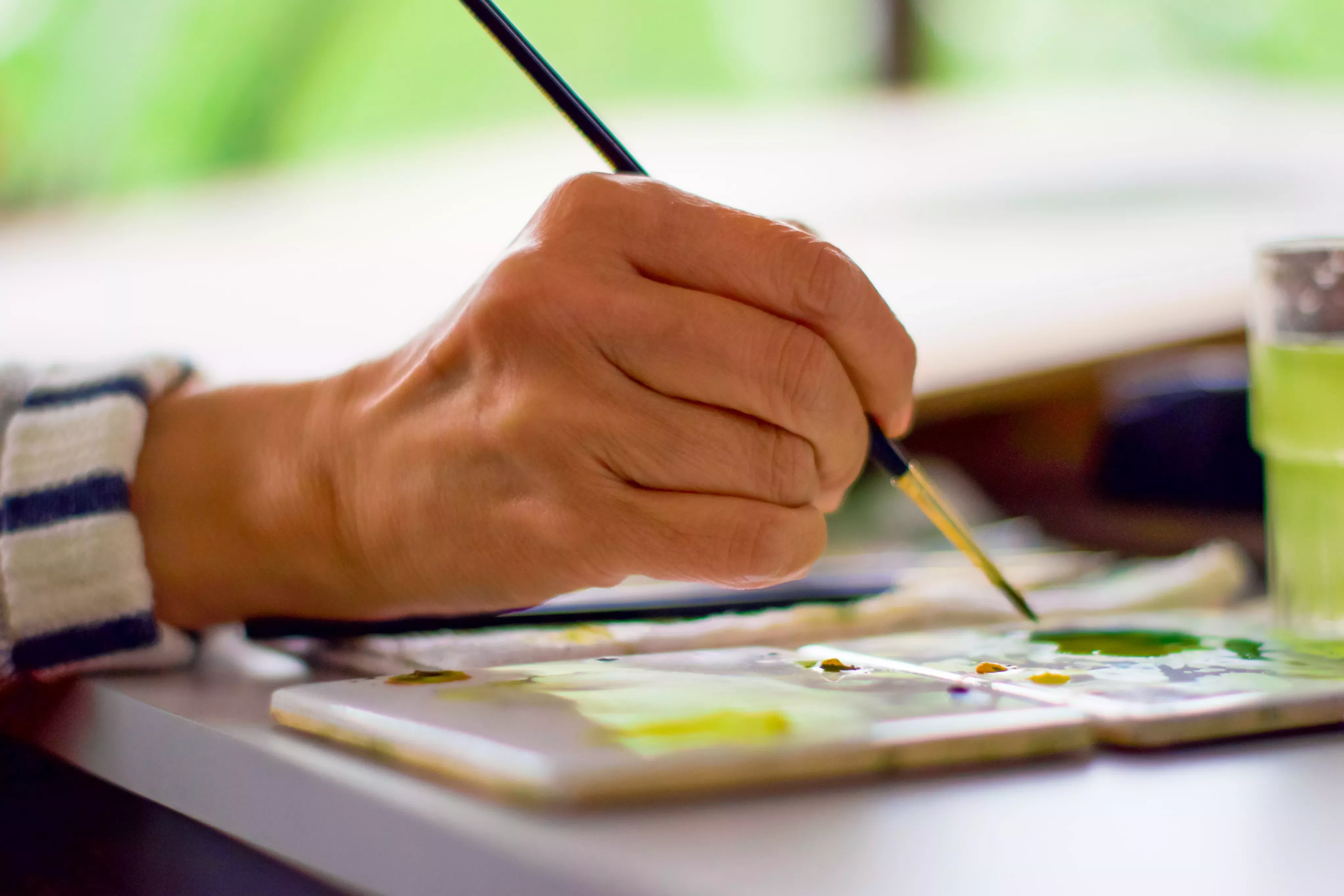
Apples, holly (Ilex) and Cotoneaster
Christabel King
'A detailed botanical drawing or painting takes a long time to do, so the best type of plant subject for beginners is something which does not change too quickly, especially if you can only work on it in short sessions.
'When I gave regular classes for beginners I used to start them off with just an apple. It is easy to draw and enables people to study drawing and painting techniques without worrying whether it will look the same later.
'Further into studying botanical drawing, a potted plant is probably the best option for a flowering subject, or a cut piece of an evergreen shrub with leaves that last in water, such as holly (Ilex), or Cotoneaster, which has lovely fruit in the autumn.
'To start with, drawing the details seems a daunting task but practice brings confidence and if your subject stays the same for a reasonable time you can work in a more relaxed manner.
'If you don’t succeed the first time, scrap the drawing and start again and perhaps try it from a different angle. The more drawing you do the faster you will improve.'
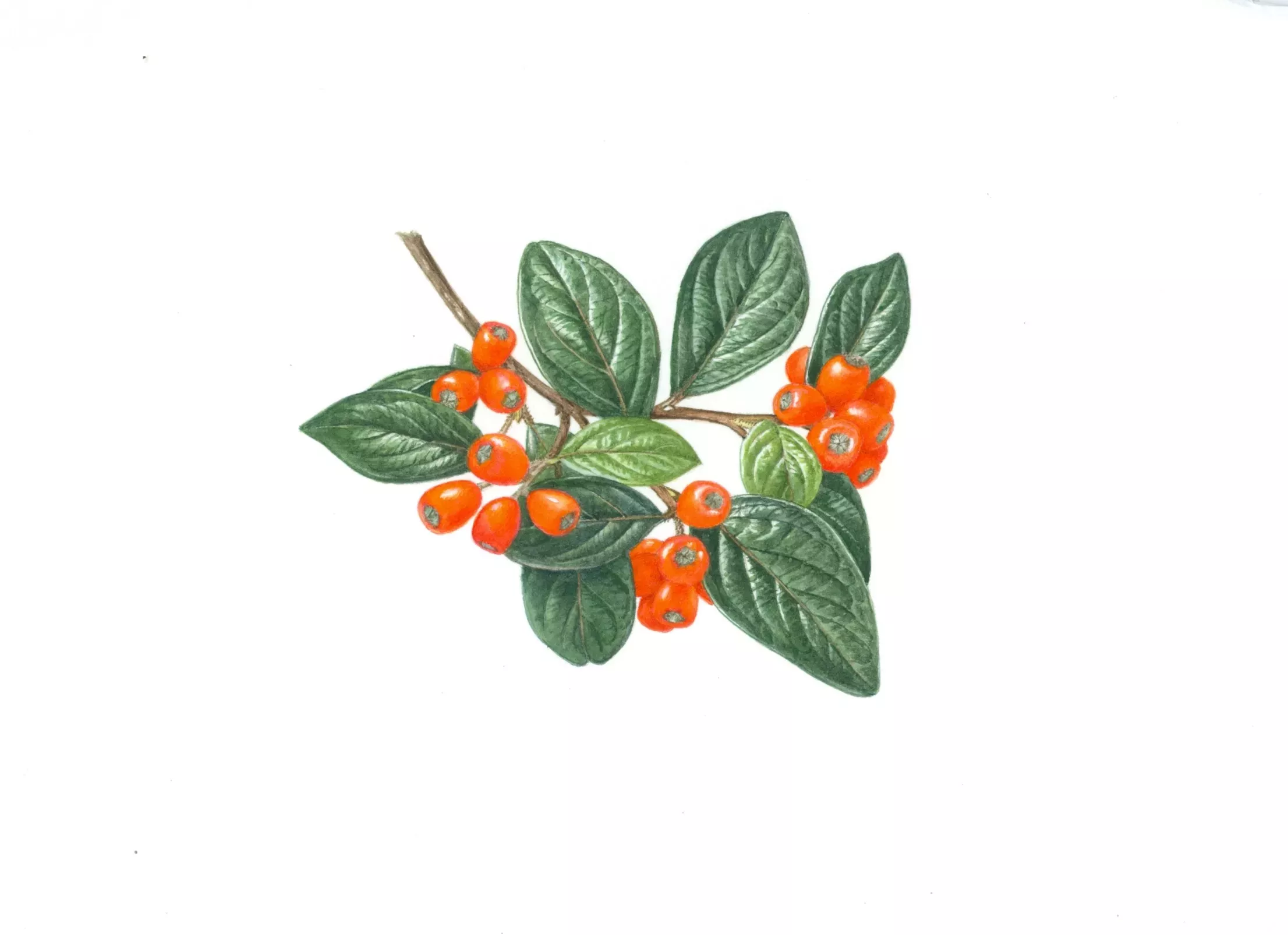
Anemones (Anemone)
Rachel Pedder-Smith
'One of the first things I really enjoyed painting when I started out were Anemones.
'They are so brightly coloured that you can use dark tones straight away and of course hide any mistakes you might make as a beginner.
'They are also quite irregular so you don’t have to focus on making sure you have the correct number of flower parts.
'The stems are often thick and bendy which makes them easier to replicate.
'Anemones also have a lovely sheen on the petals so you can leave areas white to show areas of light.'
